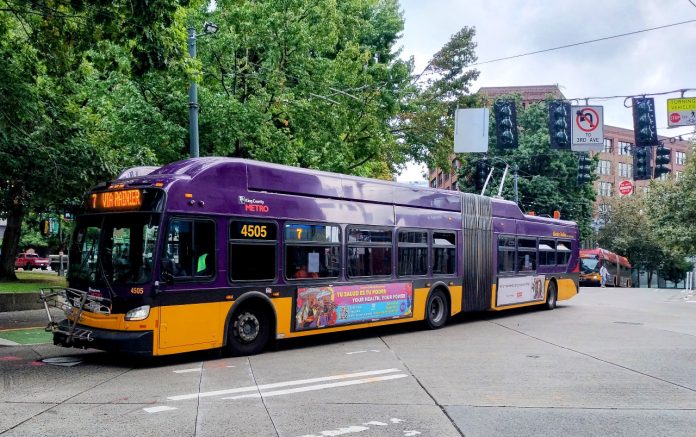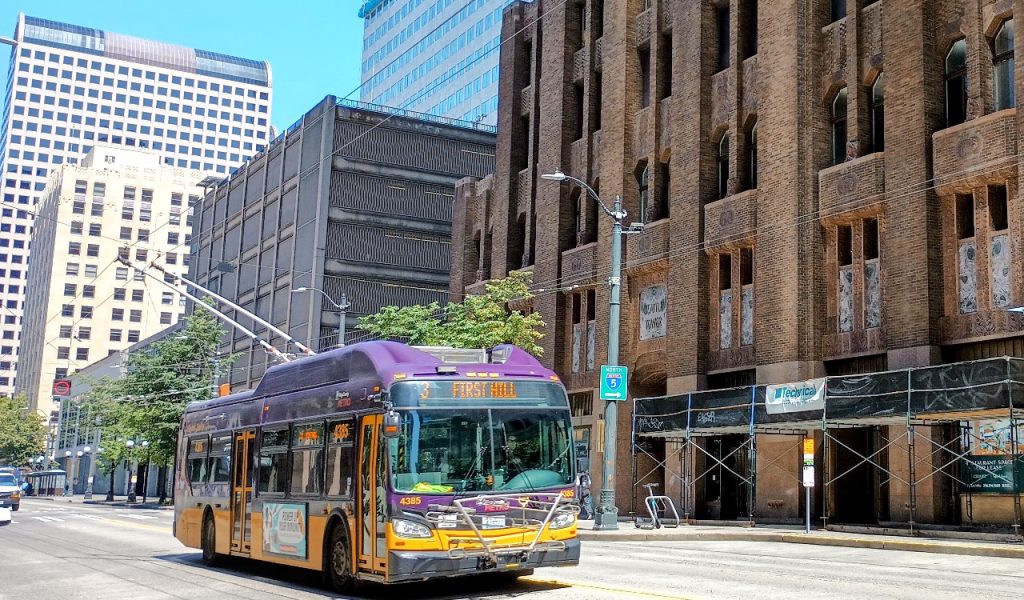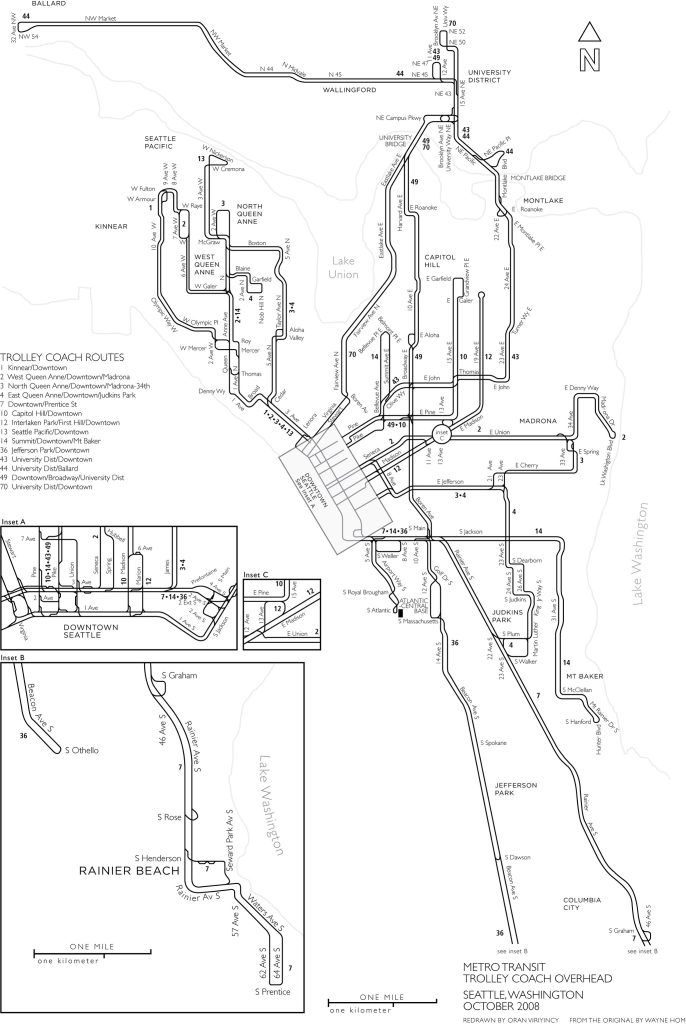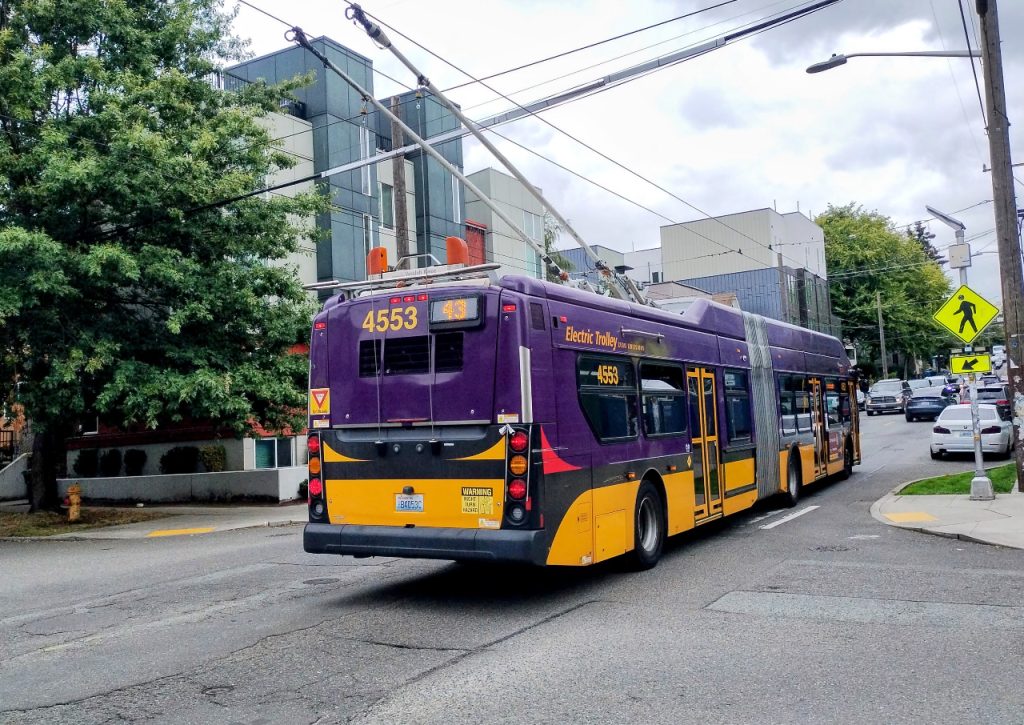
King County Metro’s fleet of electric trolleybuses is poised to get a big upgrade, via replacement batteries that will extend their off-wire capabilities to close to three times their current capacity. Following the successful installation of these more powerful batteries on four buses as a pilot program, Metro is set to roll out the upgrades to the entire fleet of 174 trolleybuses, which are all nearing a full decade in service.
The $26 million contract was announced by power systems manufacturer Kiepe, which noted that the new battery chargers come equipped with so-called “In Motion Charging” technology, or IMC. IMC allows buses to recharge their batteries while being driven through sections of a route that has overhead wires. With this capability, Metro will have more resilience with the trolley fleet, able to adapt to issues like emergency street closures that prompt reroutes on-the-fly.
“The IMC technology allows these electric buses to travel over seven miles between overhead wire connections, relying on space-saving batteries that charge during short sections of overhead line operation,” a release from Kiepe from early this month noted. “This extended range and efficiency will support King County Metro’s commitment to provide eco-friendly public transportation and the city’s broader environmental goals.”

Metro spokesperson Al Sanders provided more details to The Urbanist, including the fact that the batteries on the entire fleet were due to be replaced anyway, having been in place since the current fleet was phased in between 2015 and 2017.
“Our buses have reached their mid-life and it’s time to replace the batteries that power the trolleys. Fortunately, Kiepe is the original manufacturer of the propulsion systems for the trolley fleet,” Sanders said. “In the intervening years, they have developed new, modern era battery packs that will help our trolley fleet perform even better. The current batteries provide 26 kwh, and the new packs will provide 72 kwh – nearly triple the energy capacity. This is expected to extend the range of operation offwire for when there are incidents blocking the trolley route, or construction closures that deenergize the overhead catenary system.”

Sanders explained that the four buses involved in the pilot, two 40-foot trolleybuses and two 60-foot trolleybuses, have all exceeded 1,000 miles in operation with the new battery packs installed. With the extended range confirmed and the pilot successful, installation will start on the remaining buses in the fleet starting this fall.

Metro’s trolleybus fleet has somewhat faded into the background as the agency has been hard at work implementing a broader transportation electrification strategy focused on still-unproven battery-electric buses. The King County Council has set of goal of electrifying the bus fleet and reaching 100% zero-emission vehicles by 2035. Seattle’s trolley network hasn’t expanded in decades, with a plan to add trolley wire to the path of the Route 48 between the U District and Mount Baker, still in development a full decade after the City of Seattle completed a study on the idea.
But having longer off-wire capabilities on the entire trolley fleet could open up new opportunities for the network, potentially allowing buses to be permanently assigned to routes that are mostly on-wire but have segments where there isn’t any overhead wire, or adding new segments to existing trolley routes. But Sanders confirmed it’s too early to say whether that’s something Metro has in the works.
“The new battery systems do offer greater range and may allow for Metro to operate new trolley routes partially on-wire and partially off-wire,” he said. “However, additional testing and assessment is needed to determine the feasibility of this type of operation for specific routes.”
While the new batteries represent a change that most riders won’t even notice, the upgrades could prove incredibly beneficial to Metro as they attempt to use every tool in the toolbox to meet the County’s ambitious climate goals while still serving riders with irresistibly good transit.
Ryan Packer has been writing for The Urbanist since 2015, and currently reports full-time as Contributing Editor. Their beats are transportation, land use, public space, traffic safety, and obscure community meetings. Packer has also reported for other regional outlets including BikePortland, Seattle Met, and PubliCola. They live in the Capitol Hill neighborhood of Seattle.

